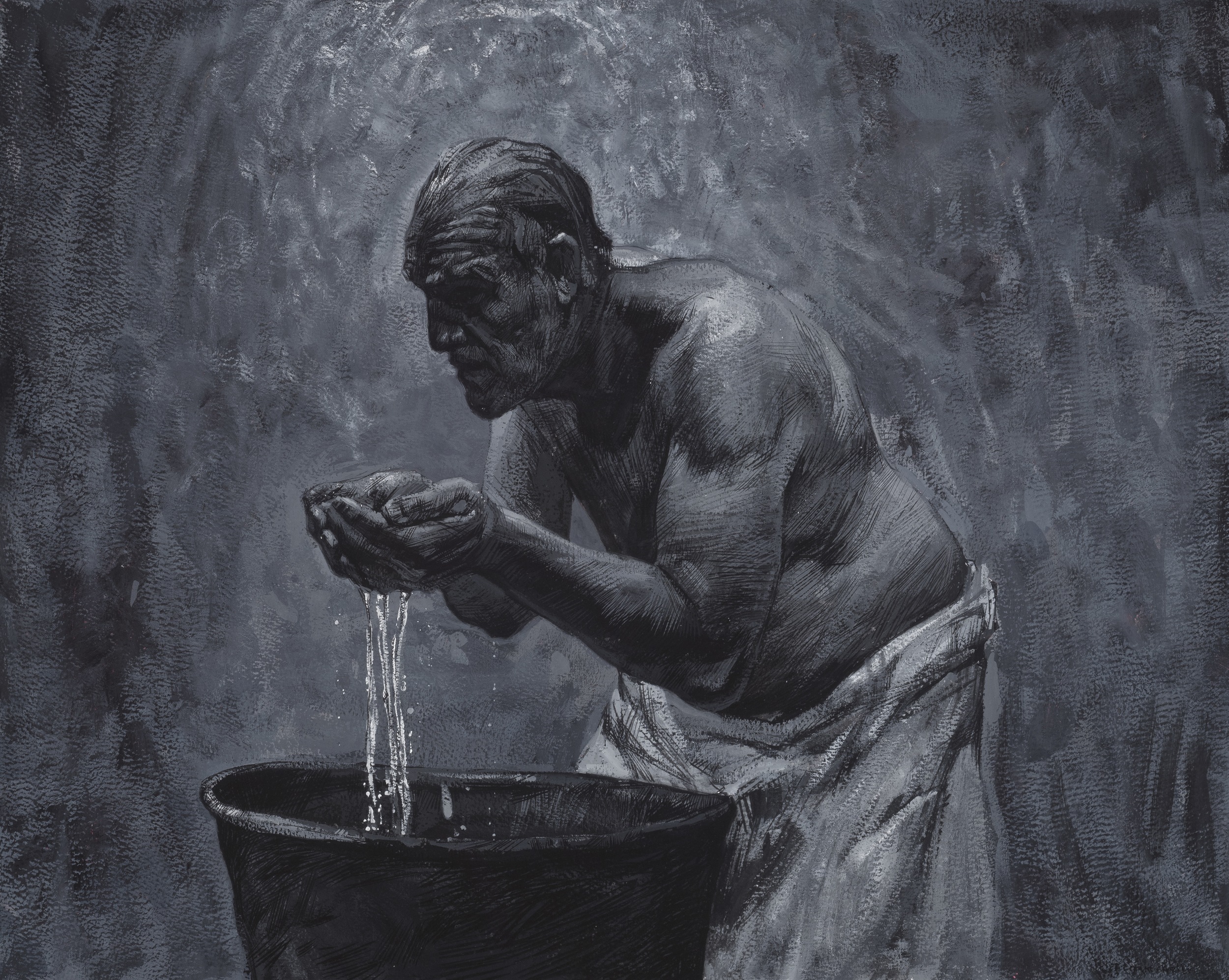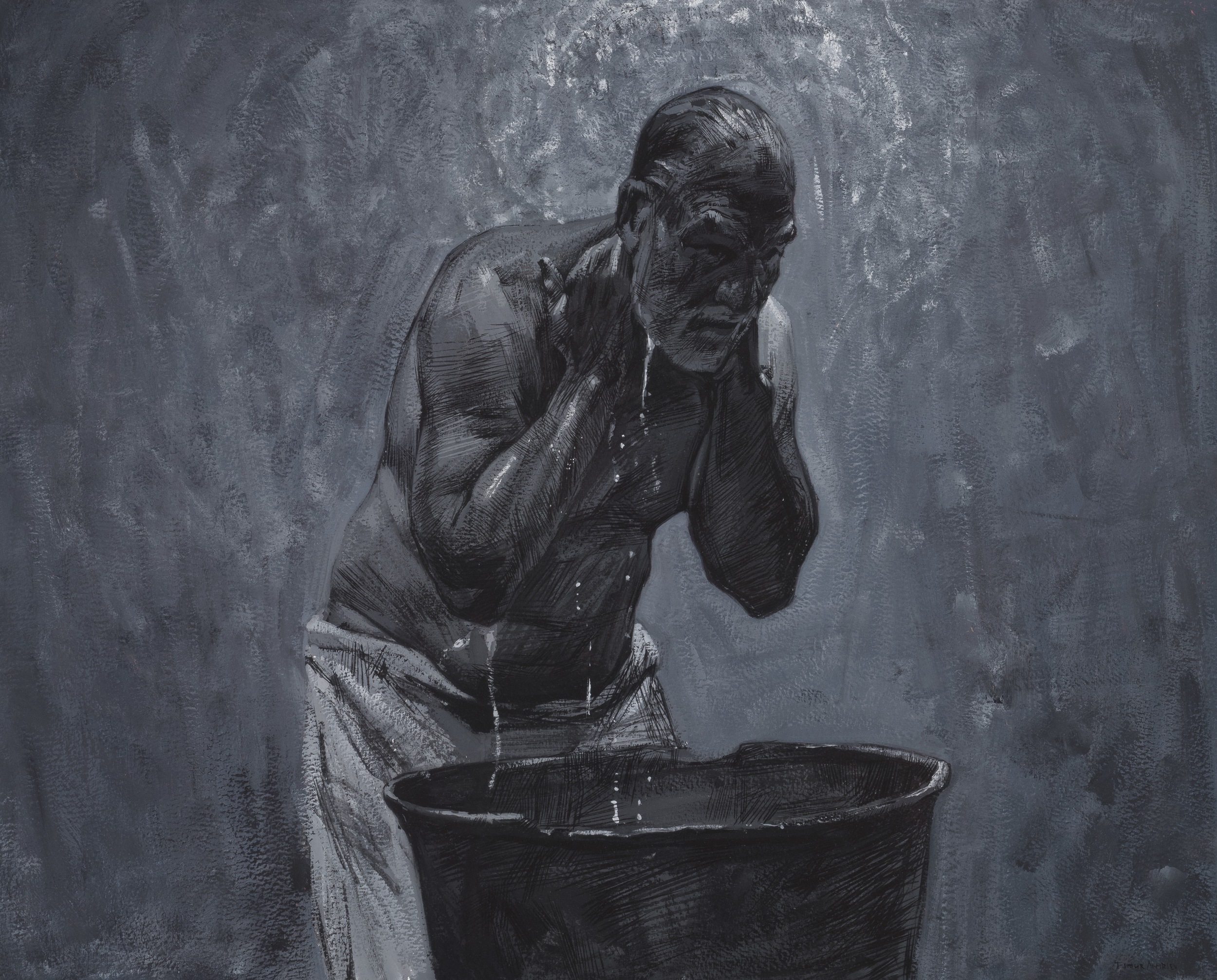The ancient rite and ritual of baptism is that of a metaphorical cleansing, of a search for a new sense of self-identification. Originally attached, of course, to religious rituals, it may by extended as I intend with this body of work, to the lay world of every day living: in other words, a kind of “washing off and away from the body” of one’s past. This, done as a means of an attempted new identification of myself, as a means to mark a change of my self-awareness amidst the world I encounter every day; and simultaneously, as a critique of that world, awash as it seems to be, with self-absorption and less meaningful interaction of one with others. Symbolically, then, the work represents a wish to find myself better grounded as I negotiate the inter-relationships with myself and everything and everyone around me.
The work is done, as is typical in academic painting, in the grisaille technique (done in achromatic modulations of value, without the use of color). Often done as an underpainting, grisaille may be done as a kind of preliminary study of value relationships, in this kind of the human form in an act of self-cleansing. Color can complicate an understanding of pure tonality, in this instance of human anatomy. Traditionally, artists used grisaille as a means of studying a new approach to making paintings; the “baptismal change” to which I allude above. As this series continues, color may be gradually incorporated into some work. For the time being, however, I find that in using grisaille there is attached to the work a kind of graphic solemnity and gravitas; as a purging, symbolically appropriate to the notion of “baptism” as this search for self-identification and personal change.


